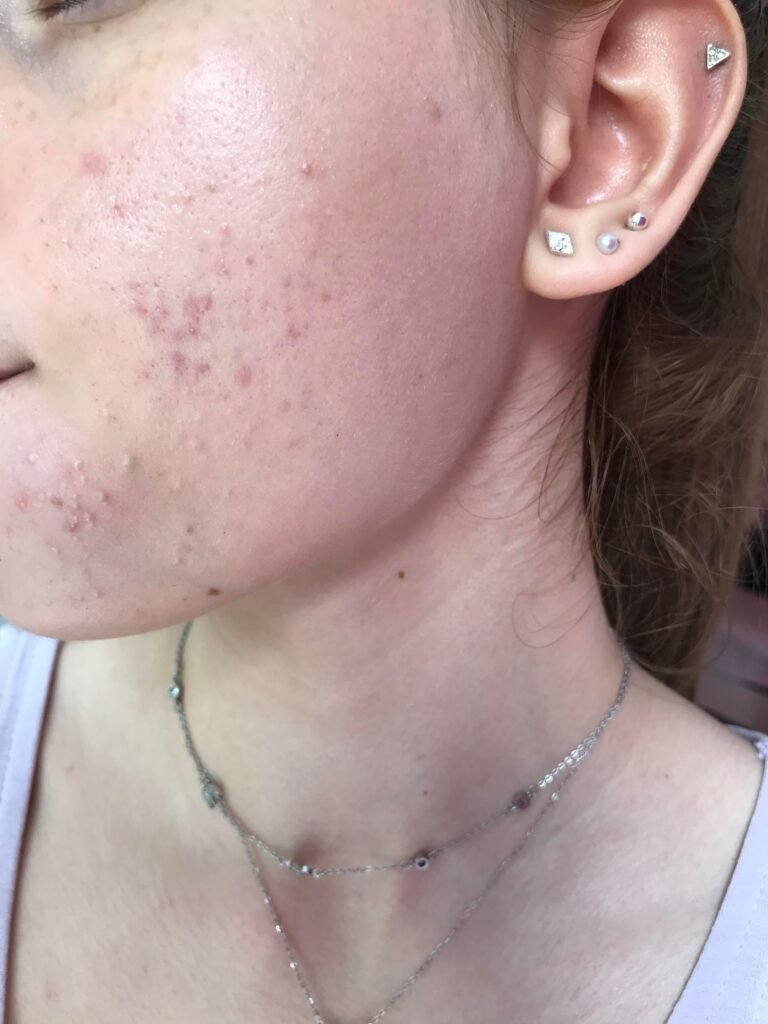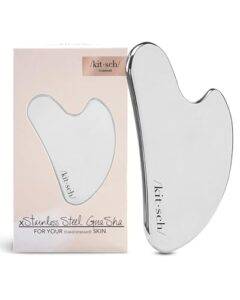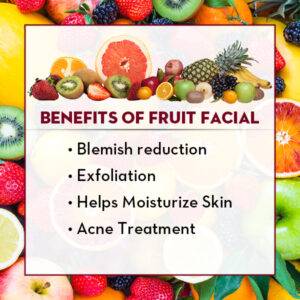This Site Is A Participant In The Amazon Services LLC Associates Program. We may earn money or products from Amazon or the companies mentioned in this post.
If you have ever wondered whether or not microdermabrasion works on closed comedones, then you are not alone. This is a common question that many people have, as they are looking for ways to improve their skin complexion and get rid of blemishes. While microdermabrasion can be an effective treatment for some types of acne, it is important to understand that it may not be the best option for everyone.
In this blog post, we will take a closer look at closed comedones and microdermabrasion to see if this treatment option is right for you.
Does Microdermabrasion Work on Closed Comedones?
Microdermabrasion is a cosmetic procedure that uses a mechanical exfoliation process to remove the outermost layer of dead skin cells. It’s often used to improve the appearance of acne scars, fine lines, and wrinkles.
But can it also help with closed comedones?
Closed comedones are small, hard bumps that appear when hair follicles become clogged with sebum and dead skin cells. They’re commonly referred to as “whiteheads.”
While they’re not typically painful or harmful, closed comedones can be difficult to get rid of.
There’s no definitive answer as to whether or not microdermabrasion can help with closed comedones. Some people may see an improvement in their condition after undergoing the treatment, while others may not notice any difference at all.
If you’re considering microdermabrasion for closed comedones, it’s important to consult with a board-certified dermatologist or other qualified skincare professional first. They’ll be able to assess your individual case and determine whether or not the treatment is likely to be effective for you.
i tried 4 closed comedones treatments, this is what happened
What is the Best Treatment for Closed Comedones?
Closed comedones, also known as whiteheads, are small bumps that form on the skin when sebum and dead skin cells get trapped in pores. While they’re not usually painful or harmful, they can be unsightly.
There are a few different treatments that can help reduce the appearance of closed comedones.
These include:
Topical retinoids: Topical retinoids are vitamin A derivatives that can help unclog pores and prevent the formation of new closed comedones. They’re available in both over-the-counter (OTC) and prescription strength formulations.
Common OTC retinoids include adapalene (Differin) and tretinoin (Retin-A). Prescription strength retinoids include tazarotene (Tazorac) and isotretinoin (Accutane).
Topical benzoyl peroxide: Benzoyl peroxide is an antibacterial agent that can kill the bacteria that contribute to closed comedone formation.
It’s available in OTC formulations ranging from 2.5% to 10% concentration.
Oral antibiotics: Oral antibiotics like doxycycline and minocycline work by reducing inflammation and killing bacteria. They may be prescribed for people with moderate to severe acne who don’t respond to other treatments.
Isotretinoin: Isotretinoin is a powerful medication that’s used as a last resort for people with severe, recalcitrant acne. It works by reducing sebum production, unclogging pores, and preventing the formation of new comedones. It can have serious side effects though, so it should only be used under the supervision of a dermatologist or other qualified healthcare provider.
How Do You Get Rid of Closed Comedones?
Closed comedones, also known as whiteheads, are a type of acne lesion. They form when dead skin cells and sebum become trapped in the pores. Unlike blackheads, closed comedones are not open to the air, which is why they appear white.
There are several ways to get rid of closed comedones. You can try over-the-counter topical treatments that contain benzoyl peroxide or salicylic acid. These ingredients help to unclog pores and prevent new lesions from forming.
If these treatments don’t work, you may need to see a dermatologist for prescription medications. Some common prescription treatments for closed comedones include retinoids, antibiotics, and azelaic acid.
Is Microdermabrasion Good for Clogged Pores?
Microdermabrasion is a good option for clogged pores because it helps to remove dead skin cells and other debris that can block pores. This treatment can be done at a salon or spa, or at home with a microdermabrasion kit. Microdermabrasion is safe for most skin types, but those with sensitive skin may want to avoid this treatment.
Why am I Getting So Many Closed Comedones?
Closed comedones, also known as blackheads, are a type of acne. They occur when your pores become clogged with sebum, dead skin cells, and dirt. This can cause the pore to enlargen, and the clog may turn black due to oxidation.
There are several reasons why you may be getting more closed comedones than usual. One reason could be that your hormones are fluctuating. fluctuating hormone levels can increase sebum production, which can lead to more clogged pores.
Another possibility is that you’re using new products that are irritating your skin or not removing makeup properly at night. It could also be that you’re not exfoliating regularly enough to prevent dead skin cells from building up in your pores.
If you’re concerned about the number of closed comedones you have, talk to a dermatologist or another skincare professional.
They can help you figure out what might be causing the problem and recommend treatments to help clear up your skin.

Credit: www.reddit.com
Closed Comedones Treatment
If you’re struggling with closed comedones, also known as whiteheads, don’t despair. There are a number of treatment options available to help clear up your skin.
One popular option is topical retinoids.
These are vitamin A derivatives that can help unclog pores and prevent the formation of new comedones. Retinoids are available in both over-the-counter and prescription formulations.
Another option is oral antibiotics.
These can help reduce inflammation and bacteria on the skin, which can lead to fewer breakouts. Antibiotics are typically used for a short period of time, until acne improves.
There are also a number of medicated cleansers, creams, and gels that contain ingredients like benzoyl peroxide or salicylic acid that can help treat closed comedones.
Be sure to talk to your doctor or dermatologist before starting any new medication to make sure it’s right for you.
Microdermabrasion for Closed Comedones Reddit
What is Microdermabrasion?
Microdermabrasion is a cosmetic procedure that uses a handheld device to sand your skin. The device has a rough surface that buffs away the top layer of dead skin cells.
Microdermabrasion can improve the appearance of fine lines, wrinkles, acne scars, and age spots. It can also make your skin look and feel softer.
How Does Microdermabrasion Work?
Microdermabrasion works by using a small, hand-held device to sand the top layer of your skin. The device has a rough surface that buffs away the top layer of dead skin cells. This process removes the outermost layer of skin, which is made up of dead skin cells.
The outermost layer of skin is called the stratum corneum. Once this layer is removed, new skin cells can grow in its place. New skin cells are typically softer, smoother, and more evenly pigmented than older ones.
Microdermabrasion can be done with or without suction. Suction-assisted microdermabrasion uses negative pressure to pull your skin into contact with the abrasive tip on the device. This type of microdermabrasion is often used on areas with thicker layers of deadskin cells, such as the elbows or knees .
Non-suction microdermabrasion relies on gravity to bring your skin into contact with the abrasive tip . This type is often used on sensitive areas , such as aroundthe eyes or on people with thinner layersof deadskin cells .
Purging Closed Comedones
A closed comedone is a type of acne lesion that forms when a hair follicle becomes clogged with sebum, dead skin cells, and other debris. Unlike blackheads, which have an open pore at the surface of the skin, closed comedones are not visible to the naked eye. However, they can be felt as small bumps under the skin.
While closed comedones don’t pose any serious health risks, they can be annoying and difficult to get rid of. Fortunately, there are several effective treatments available for purging these pesky blemishes.
The first step in treating closed comedones is to determine what’s causing them.
If you’re using any new products or medications that could be irritating your skin, discontinue use and see if your blemishes clear up on their own. If not, it’s time to consult a dermatologist or esthetician for help.
There are a variety of topical treatments that can effectively purge closed comedones from your skin.
These include retinoids, benzoyl peroxide, salicylic acid, and tea tree oil. Your dermatologist will likely recommend one of these treatments based on your individual needs and preferences.
In some cases, oral medications may also be necessary to treat closed comedones.
For example, if you have severe acne or are resistant to topical treatments, your doctor may prescribe antibiotics or isotretinoin (Accutane). These medications can help reduce inflammation and kill bacteria that can cause breakouts.
If you’re struggling with Closed Comedones , know that you’re not alone!
Many people deal with this frustrating condition on a daily basis. But with proper treatment , it is possible to get rid of those pesky blemishes for good!
Best Product for Closed Comedones
If you’re struggling with closed comedones, also known as whiteheads, you’re not alone. These pesky little bumps can be frustrating and difficult to get rid of. But don’t despair, there are products out there that can help.
In this blog post, we’ll take a look at some of the best options for treating closed comedones.
One popular product for treating closed comedones is salicylic acid. This ingredient is found in many over-the-counter acne treatments.
It works by exfoliating the skin and unclogging pores. This can help to reduce the number of breakouts and make existing blemishes less noticeable.
Another option is benzoyl peroxide, which is another common acne treatment ingredient.
Benzoyl peroxide works by killing bacteria on the surface of the skin. This can help to prevent new breakouts from forming and also helps to dry up existing blemishes.
If over-the-counter treatments aren’t doing the trick, you may want to consider a prescription medication like tretinoin or adapalene.
These medications are both retinoids, which work by increasing cell turnover and preventing clogged pores. Tretinoin is available as a cream or gel, while adapalene comes in a gel form.
If you’re looking for a natural option, tea tree oil has been shown to be effective against acne-causing bacteria (1).
You can find tea tree oil at most health food stores or online retailers selling essential oils . Just add a few drops to a cotton ball or pad and apply it directly to problem areas after cleansing your face .
There are plenty of options out there for treating closed comedones so don’t give up hope!
With patience and trial and error, you’ll find something that works for you .
Does Spironolactone Help With Closed Comedones
If you’re concerned about closed comedones, or small bumps on the skin that are often a precursor to acne, you may be wondering if spironolactone can help. While this medication is typically used for other conditions, such as hypertension, some dermatologists believe that it can also be helpful in treating closed comedones.
Spironolactone works by inhibiting the production of androgens, which are hormones that can contribute to the development of acne.
In addition, this medication also has anti-inflammatory properties that can help to reduce redness and swelling associated with closed comedones.
While there is some evidence to suggest that spironolactone may be effective in treating closed comedones, more research is needed to confirm these results. If you’re considering using this medication for your skin condition, talk to your dermatologist first to see if it’s right for you.
What Causes Closed Comedones
If you have ever had a pimple, chances are you have also had a closed comedone. But what exactly is a closed comedone? And what causes them?
A closed comedone is a small, white bump that appears on the skin. They are commonly found on the face, chest, and back. Closed comedones are not contagious and are not caused by dirt or poor hygiene.
So, what does cause closed comedones? Well, there are several factors that can contribute to their formation. First, increased levels of testosterone can stimulate the production of sebum, which can clog pores and lead to Comedonal acne .
Additionally , dead skin cells and excess oil can build up in pores and trap bacteria , leading to the formation of a Comedone . Finally , certain medications ( such as corticosteroids ) can also cause Comedones by weakening the skin’s ability to shed dead cells .
While closed Comedones themselves are not harmful , they can be quite frustrating because they often lead to breakouts .
If you are struggling with closed Comedones , there are several things you can do to treat them. Be sure to cleanse your face twice daily with a gentle cleanser . Exfoliate regularly with an AHA or BHA product to help prevent dead skin cells from building up in pores.
And lastly , use a topical retinoid or benzoyl peroxide product to help unclog pores and clear away any existing blemishes.
Salicylic Acid for Closed Comedones
If you’re dealing with closed comedones, also known as “whiteheads,” you may want to consider using salicylic acid. This powerful ingredient can help to break down the “plugged-in” sebum and dead skin cells that are clogging your pores, leading to fewer blemishes.
When used in conjunction with other acne-fighting ingredients like benzoyl peroxide or retinoids, salicylic acid can be even more effective.
And because it’s available in both over-the-counter and prescription formulations, it’s easy to find a product that works for you.
Closed Comedones Treatment at Home
If you have closed comedones, or small bumps on your skin that are caused by clogged pores, there are a few things you can do at home to treat them.
First, it’s important to cleanse your face twice a day with a gentle cleanser. Avoid using harsh scrubs or anything that will irritate your skin.
You should also use a soft washcloth or cotton pad when cleansing instead of scrubbing at your face.
Next, apply an acne spot treatment to the affected areas. This can help to dry out the bumps and reduce inflammation.
Be sure to read the instructions on the product before applying it, as some products need to be left on for several hours while others should only be used for a few minutes at a time.
You can also try making a DIY acne spot treatment by mixing 1 part baking soda with 3 parts water. Apply this mixture to the closed comedones with a cotton swab and let it sit for 15 minutes before rinsing off with warm water.
In addition to these treatments, be sure to drink plenty of water and eat a healthy diet as this can help improve your skin’s overall appearance.
Conclusion
If you’re struggling with closed comedones, also known as clogged pores, you may be considering microdermabrasion as a treatment option. But does microdermabrasion actually work on closed comedones?
The short answer is yes, microdermabrasion can help to improve the appearance of closed comedones.
This popular skincare treatment involves using a handheld device to gently sand away the top layer of skin. This can help to unclog pores and smooth out the skin’s surface.
Microdermabrasion is generally considered safe for most people, but it’s always important to consult with a dermatologist before undergoing any kind of skincare treatment.
If you have sensitive skin, your dermatologist may recommend a different treatment option.

Amelia Varley is a professional beauty blogger and freelance writer with a passion for all things skincare, makeup, and holistic wellness. With years of experience in the beauty industry, Amelia shares expert tips, product reviews, and innovative beauty routines with her readers. Her writing is driven by a desire to empower people to look and feel their best through mindful beauty practices. When she’s not writing, Amelia enjoys experimenting with the latest beauty trends and exploring the connection between self-care and confidence.





